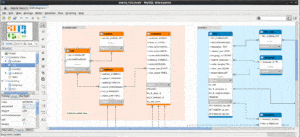In the era of digital transformation, the volume of data generated is unprecedented. To harness the potential of this vast sea of information, technologies like Hadoop have emerged as game-changers. This article provides an in-depth exploration of Hadoop and its role in processing big data.
Understanding Hadoop and Big Data
Big Data refers to datasets of such magnitude and complexity that traditional data processing applications become inadequate. Hadoop, an open-source framework, was designed to address these challenges and efficiently process large volumes of data across distributed clusters.
Hadoop Architecture: Key Components
Hadoop’s architecture comprises several key components that work in tandem to enable distributed data processing. Understanding these components is fundamental to unlocking the full potential of Hadoop.
Hadoop Distributed File System (HDFS)
HDFS is the storage backbone of Hadoop. Explore how it breaks down large datasets into smaller blocks, distributes them across a cluster, and ensures fault tolerance for robust data storage.
MapReduce Paradigm
MapReduce is Hadoop’s programming model for processing and generating large datasets. Delve into the MapReduce paradigm, understanding how it divides tasks into mappers and reducers for parallel processing.
YARN: Resource Management in Hadoop
YARN (Yet Another Resource Negotiator) plays a critical role in managing resources and enabling multiple applications to share Hadoop’s cluster resources efficiently.
Hadoop Ecosystem: Beyond MapReduce
While MapReduce is pivotal, Hadoop’s ecosystem extends beyond it. Explore additional components such as Hive, Pig, HBase, and others, each serving specific purposes in data processing and storage.
Apache Spark: Enhancing Big Data Processing
Spark, a fast and versatile data processing engine, complements Hadoop by providing in-memory data processing capabilities. Learn how Spark enhances the speed and efficiency of big data analytics.
Hadoop and Data Analytics
Data analytics is at the core of Hadoop’s functionalities. This section explores how Hadoop facilitates data analytics by processing large datasets and extracting valuable insights for informed decision-making.
Real-world Applications of Hadoop and Big Data
Hadoop has found application in various industries, from finance to healthcare. Explore real-world use cases, including predictive analytics, fraud detection, and personalized recommendations, showcasing the versatility of Hadoop and big data.
Challenges and Future Trends
While Hadoop has transformed the big data landscape, challenges such as data security and complexity persist. Additionally, future trends like machine learning integration and edge computing are shaping the evolution of Hadoop.
Hadoop and Big Data Conclusion
In conclusion, Hadoop has emerged as a cornerstone in the field of big data processing. Its architecture, components, and ecosystem collectively empower organizations to tackle the challenges posed by massive datasets. As technology evolves, Hadoop remains a powerful tool, playing a crucial role in the ever-expanding world of big data.
FAQs
- What is the primary purpose of Hadoop in big data processing?
- Hadoop is designed to efficiently process and manage large volumes of data across distributed clusters, addressing the challenges posed by big data.
- How does HDFS ensure fault tolerance in data storage?
- HDFS achieves fault tolerance by breaking down large datasets into smaller blocks, distributing them across a cluster, and replicating each block to ensure redundancy.
- What is the role of YARN in Hadoop architecture?
- YARN manages resources in Hadoop, allowing multiple applications to share cluster resources efficiently and ensuring optimal resource utilization.
- Can you provide examples of real-world applications of Hadoop and big data?
- Real-world applications include predictive analytics, fraud detection, personalized recommendations, and more, showcasing the diverse applications of Hadoop in various industries.
- What challenges does Hadoop face, and what are the future trends in the field of big data processing?
- Challenges include data security and complexity. Future trends involve machine learning integration, edge computing, and continued advancements in big data technologies.
